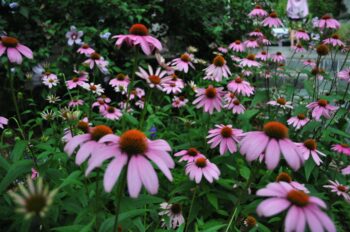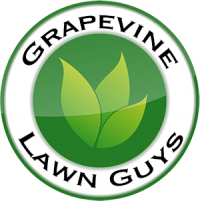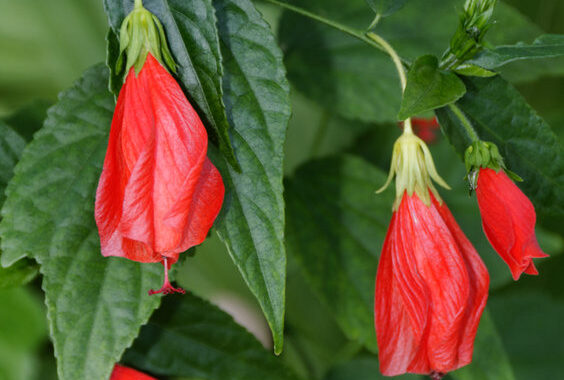North Texas landscaping plants, what are the best ones? Considering adding some greenery and color to your North Texas landscaping?
In Texas, it’s a good idea to choose native plants. Native plants withstand the region’s hot summers and mild winters. Keep reading this blog post to learn about some native plants and how to care for them.

Field of Black-Eyed Susans
What are Native Plants
Native plants are plants that have evolved and adapted to the specific environmental conditions of a particular region or ecosystem without human intervention.
They are naturally occurring and have been present in their habitat for thousands of years.
Native plants have developed unique characteristics that allow them to survive and thrive in their specific environment. This includes an ability to tolerate the local climate, soil, and other environmental factors.
Contact us today for help you need with landscape design and installation. We’ll plant them and you get to enjoy them!
Advantages to Growing Native Plants
Growing native plants in North Texas offers several advantages for homeowners and the environment. One of the biggest advantages is that native plants are adapted to the local climate and soil conditions. This makes them more resilient and less susceptible to pests and diseases.
Furthermore, they require less water, fertilizer, and pesticides than non-native plants. Which saves homeowners time and money on maintenance. Additionally, native plants provide important habitat and food sources for local wildlife.
This helps to support a healthy and diverse ecosystem in North Texas. Additionally, native plants help to reduce erosion and improve soil health.
Finally, growing native plants helps to promote a sense of place and connection to the local landscape. Overall, growing native plants in North Texas is a smart and sustainable choice that offers many benefits for both homeowners and the environment.
We would love to clean out your landscape beds and make room for some native plants to grow. Check out our flower bed install and cleanup service page.
Here are some of the best native plant options to consider in North Texas:
- Texas Sage
- Black-Eyed Susan
- Lantana
- Turk’s Cap
- Agave
- Purple Coneflower
Texas Sage – This hardy shrub is a staple in North Texas landscaping. It can handle extreme heat and drought conditions, and produces beautiful purple flowers in the spring.

Texas Sage
Black-eyed Susan – These vibrant yellow flowers bloom from late spring to early fall, making them a great addition to any garden. They are also drought-tolerant and attract pollinators like bees and butterflies.
Lantana – Lantana is a colorful shrub that can thrive in hot, dry conditions. It comes in a variety of colors, including pink, orange, and yellow, and attracts hummingbirds and butterflies.
Turk’s Cap- Red, pendant shaped flowers that requires minimal water once established. It will grow from 2-10 ft tall and will grow in full sun, but also tolerates shade.
Agave – If you’re looking for a unique plant to add to your landscape, consider an agave. These succulents come in a variety of sizes and shapes and require little water or maintenance.

Purple Coneflower
Purple Coneflower – Purple flowers with a spiky, orange center that grow in a downward cone shape. Prefers moist soil, but will grow in dry soil as well. This flower grows anywhere from 2-4 ft and will survive for around 5-6 years.
How to Care for Native Plants
Caring for native plants is relatively easy, as they are already adapted to the local environment. However, there are some important tips to keep in mind to ensure that native plants thrive.
First, it is important to choose the right plant for the right location. Native plants have specific soil, light, and water requirements. Do adequate research and choose a plant that is suited to the conditions of the planting site.
Second, it is important to water native plants regularly, especially during the first year after planting. Native plants don’t need as much water as non-native plants. Although, they still require consistent moisture to establish a strong root system.
Third, it is important to mulch around native plants to help retain moisture, suppress weeds, and regulate soil temperatures. Planting and mulching is one of our most requested services.
Fourth, it is important to prune native plants regularly to remove dead or damaged branches and promote healthy growth.
Finally, it is important to avoid using pesticides and fertilizers on native plants. These will harm the delicate balance of the local ecosystem. By following these care tips, native plants will thrive and provide important ecological benefits for years to come.
Wrapping Up
When choosing plants for your North Texas landscaping, it’s important to consider their individual needs for water, sunlight, and soil. By selecting plants that are well-suited to the region’s climate and soil conditions, you will create a beautiful and sustainable landscape.

